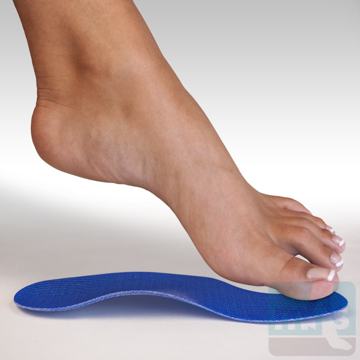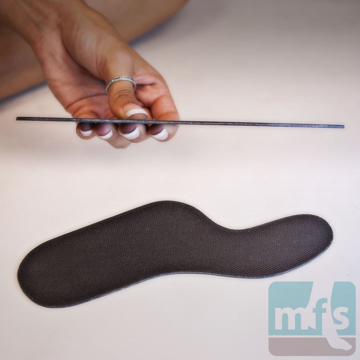Painful hallux limitus can be managed with the use of insoles, but an understanding of the staging of hallux limitus is important to understand which insole to use. This article discusses staging of hallux limitus and orthotic selection.
Treating Hallux Limitus with Orthotics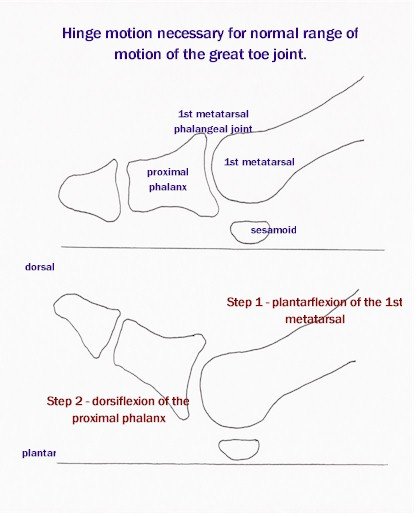
When to choose a turf toe plate vs. Vasyli-Howard Dananberg Insole
Hallux limitus is a painful condition of the great toe joint that is the result limited range of motion of the joint. The limitation of range of motion has several contributing factors, the most common of which is an elevated 1st metatarsal (metatarsus primus elevatus). Normal range of motion of the great toe joint requires a hinge motion of the first metatarsal and the bone of the toe (the proximal phalanx). The associated diagram shows how the first metatarsal plantarflexes, allowing the proximal phalanx to dorsiflex.
Hallux limitus has four stages. With each progressive stage, from 1 through stage 4, the joint undergoes progressive degenerative changes consistent with what we could call localized osteoarthritis. Conservative care of hallux limitus includes the use of inserts to either increase the range of motion of the great toe joint or limit range of motion. The choice of increasing or decreasing the range of motion depends upon the stage of hallux limitus.
In stages 1 and 2, use of an orthotic to increase the range of motion of the joint can enable plantarflexion of the first metatarsal 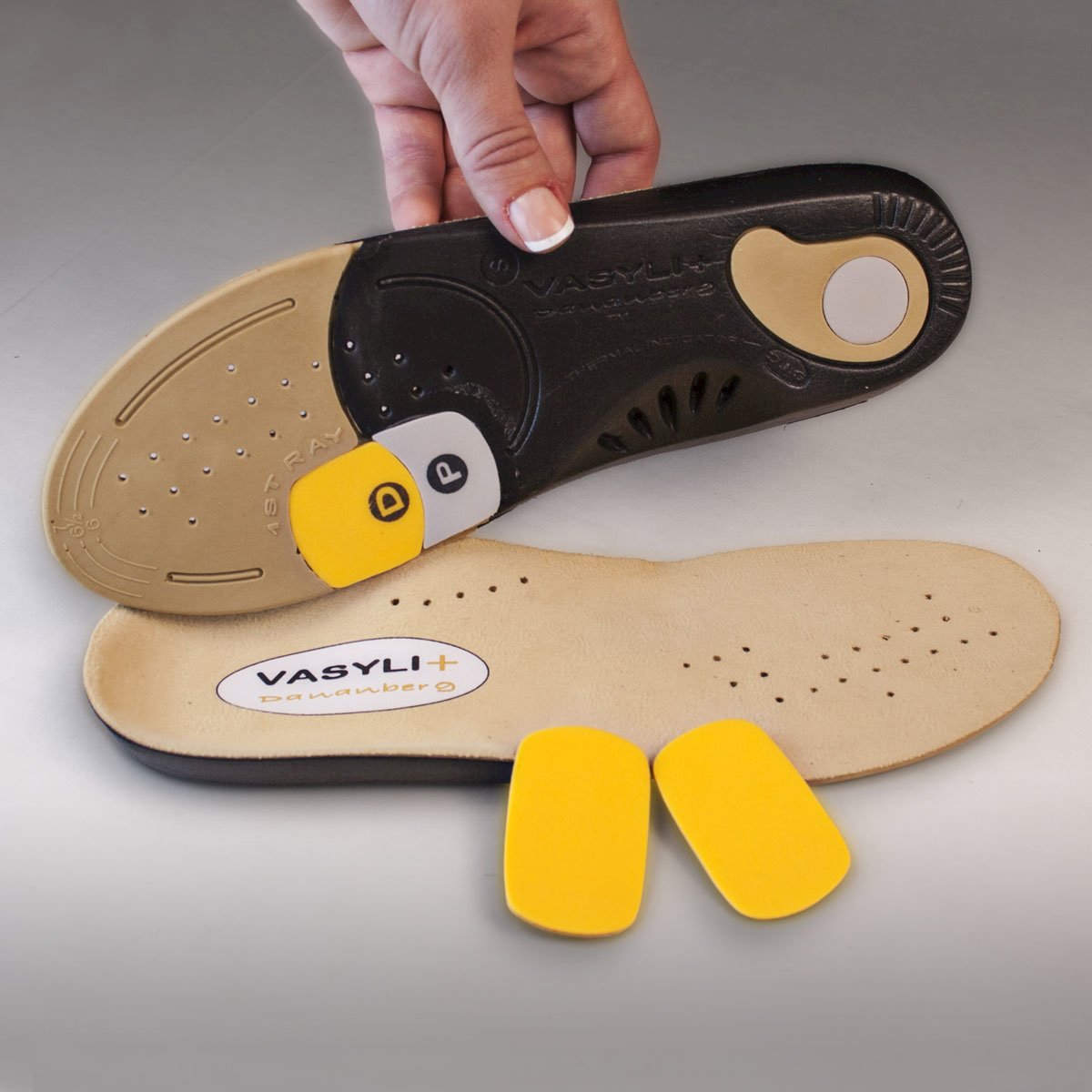 and decrease pain. By increasing the range of motion of the joint, the joint no longer jams. The result is less pain and a decrease in the rate of onset of stages 3 and 4 (stage 4 also called hallux rigidus). The best tool to use in stages 1 and 2 is the Vasyli-Howard Dananberg Insole. The Vasyli-Dananberg Insole has a pair of wedges that can be moved and placed in a way that plantar flexes the first metatarsal and increases range of motion.
and decrease pain. By increasing the range of motion of the joint, the joint no longer jams. The result is less pain and a decrease in the rate of onset of stages 3 and 4 (stage 4 also called hallux rigidus). The best tool to use in stages 1 and 2 is the Vasyli-Howard Dananberg Insole. The Vasyli-Dananberg Insole has a pair of wedges that can be moved and placed in a way that plantar flexes the first metatarsal and increases range of motion.
In hallux limitus stages 3 and 4, the joint has already undergone significant degenerative arthritic change. Trying to increase the range of motion in stages 3 and 4 would create increased pain in the joint. In stages 3 and 4, we change our conservative approach from increasing the range of motion to decreasing the range of motion. In stages 3 and 4 we use insets with a stiff extension known as a 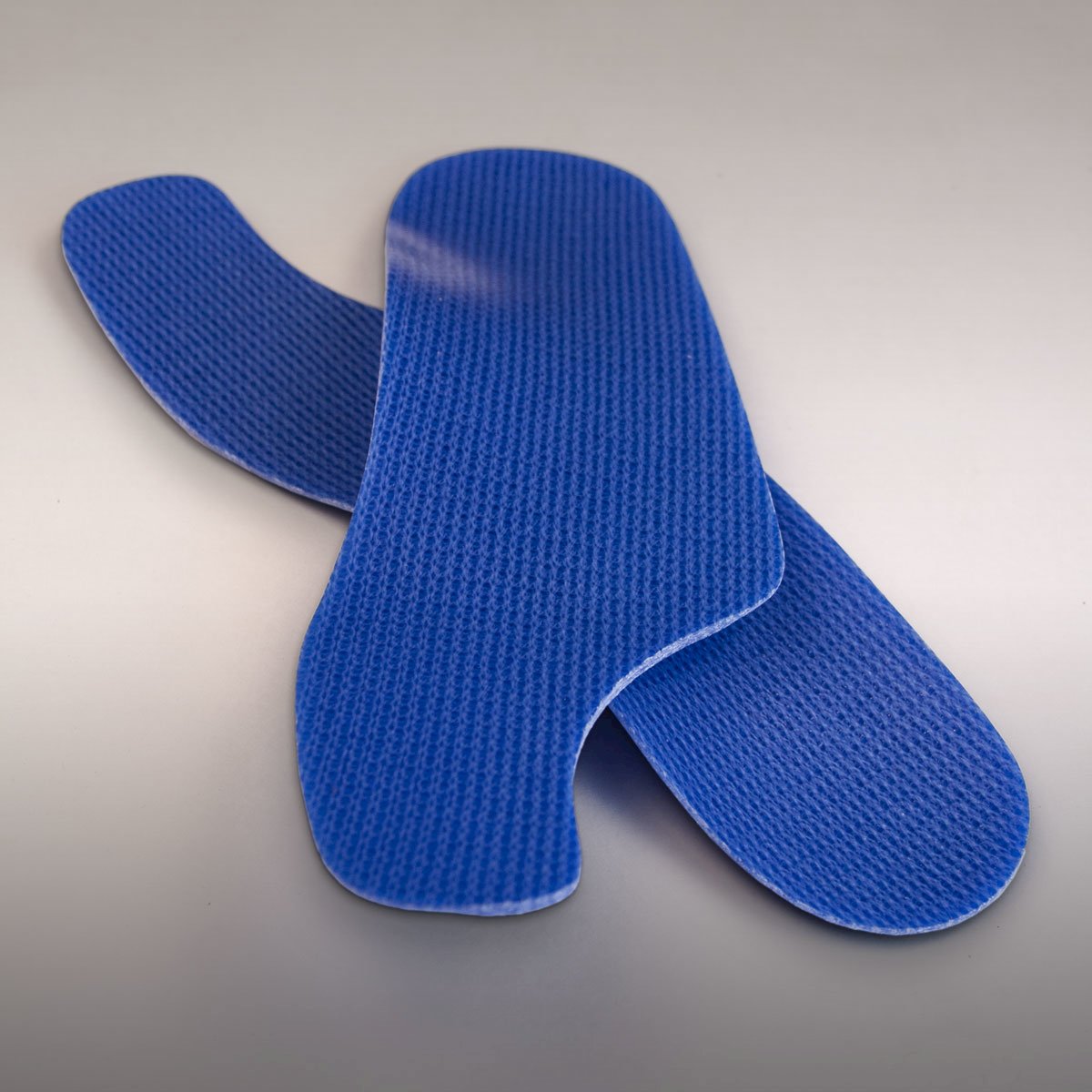 Morton's extension beneath the great toe. Products with a Morton's extension include the molded turf toe plate and the flat turf toe plate. Spring plates may also be used to treat stages 1-4 by stiffening the entire forefoot.
Morton's extension beneath the great toe. Products with a Morton's extension include the molded turf toe plate and the flat turf toe plate. Spring plates may also be used to treat stages 1-4 by stiffening the entire forefoot.
Which insert is the best for your needs? First, it's important to know the stage of hallux limitus. Early stages benefit from increased range of motion while late stages benefit from splinting. The type of shoe that you intend to wear and the activity that you intend to participate in are also points to be included in choosing the right product.
Be sure to read our knowledge base page on hallux limitus to better understand staging and selection of the right products. If you have additional questions, contact our sales staff by chat, phone or support ticket.
Jeff
Medical Advisor
Myfootshop.com
Updated 3/18/2021









